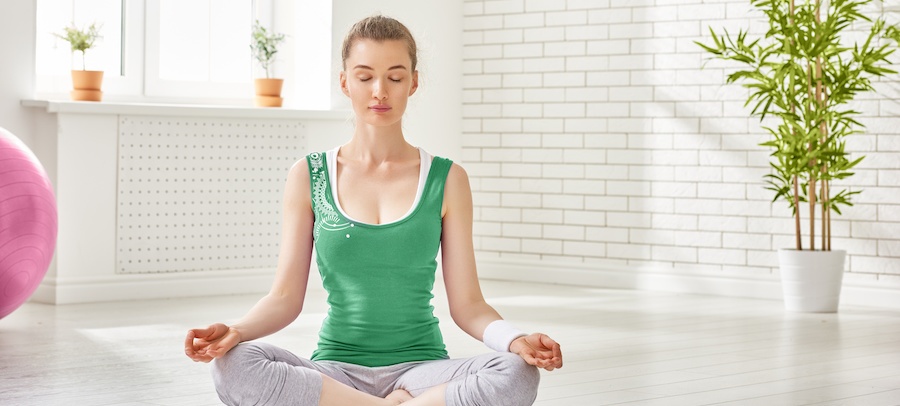By Oleg Maksimov & Lauren Shapiro
Aromatherapy and yoga are both ancient healing practices focused on physical, mental, and spiritual health. They have developed in close connection for thousand years, and historically have been used in tandem to support the body, clear the mind, and lift the spirit.
But you don’t have to be a history expert to benefit from combining essential oils and yoga. There are lots of ways you can safely start using aromatherapy to support your personal practice, enhance your teaching space, or create a must-have experience for your clients.
Background on Aromatherapy and Yoga
The ancient Indian healing system, Ayurveda[1], uses essential oils and asana[2] to balance and unblock the body’s chakras, which promotes the flow of life energy. The chakras are the energy centers of the body.
According to Ayurveda, there are seven major chakras and each is associated with a major nerve plexus and endocrine gland. It is believed that physical problems that manifest in the body are the result of blocked energy flow through the chakras.[3]
Now, maybe the language of the chakras doesn't speak to you. That’s okay. Modern science has also shown a strong connection between aromatherapy and asana practice.
The combination has been shown to balance the autonomic nervous system, raise the levels of gamma amino-butyric acid[4] in the brain, and help reach hormonal homeostasis.[5] In addition, essential oils possess cleansing properties that make them extremely useful hygiene tools in public places, like yoga studios.
Here are three ways you can start reaping the benefits of aromatherapy in your yoga practice:
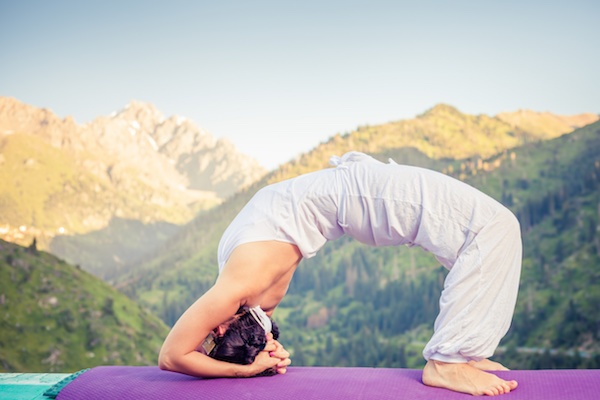 #1 Add essential oils into your morning vinyasa.
#1 Add essential oils into your morning vinyasa.
What better way to start your day than with 6 a.m. vinyasa?[6] It is a healthier and more efficient way to awaken the body than drinking a cup of coffee!
Studies have shown that morning yoga can elevate your mood, particularly if you incorporate standing poses, back-bends, and inversions.[7] Some good poses for a morning practice might include mountain pose (tadasana), bridge pose (setu bandha sarvangasana), and legs up the wall (viparita karani).
If you want to enhance your morning practice, consider diffusing an energizing essential oil or essential oil blend in your practice space. You might try spearmint Mentha spicata (L.), peppermint Mentha × piperita (L.), bergamot Citrus aurantium var. bergamia (Risso), grapefruit Citrus paradisi (Macfad.), or lemon Citrus limonum (Risso). These essential oils are known for their ability to boost mood, and will help you to feel more vigorous.[8]
In other words, morning yoga combined with aromatherapy can help you to start your day more energized and in a happy mood!
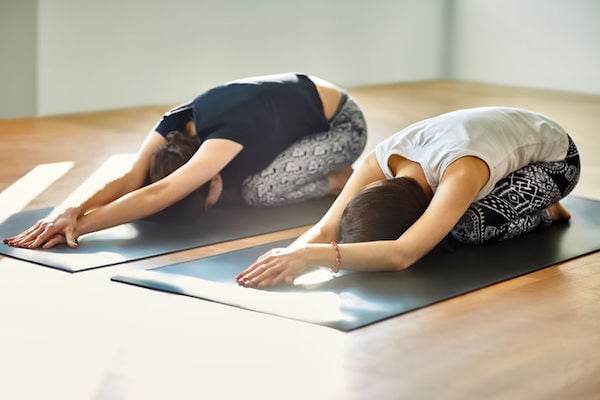
#2 Add essential oils into your restorative evening yoga practice.
Restorative yoga in the evening is a great way to calm down the nervous system and to alleviate some of the stress that has accumulated during the day. Standing and sitting exercises followed by deep relaxation poses, meditation, and breath counting can help to bring the body to a state of rest; these practices have also been reported to significantly improve sleep quality.[9]
A few relaxation poses you might want to try in your restorative yoga practice include child’s pose (balasana), reclining bound angle pose or reclining butterfly (supta baddha konasana), and supported bridge pose (setu bandha sarvangasana).
To enhance your evening practice, consider diffusing a soothing essential oil or essential oil blend in your practice space. You might try clary sage Salvia sclarea (L.), lavender Lavandula angustifolia (Mill.), or ylang ylang Cananga odorata (Lam.). These calming essential oils have been shown to slow down heart rate and reduce blood pressure. They may also help improve sleep quality.[10]
In other words, evening yoga combined with aromatherapy can help you to reduce stress, rest, and may even help achieve good-quality sleep. The combo may also be a healthy alternative to drug interventions if you struggle with sleep issues like insomnia. But always check with your primary care physician, naturopathic doctor, and/or Registered Aromatherapist before making any changes to your health and wellness routine.
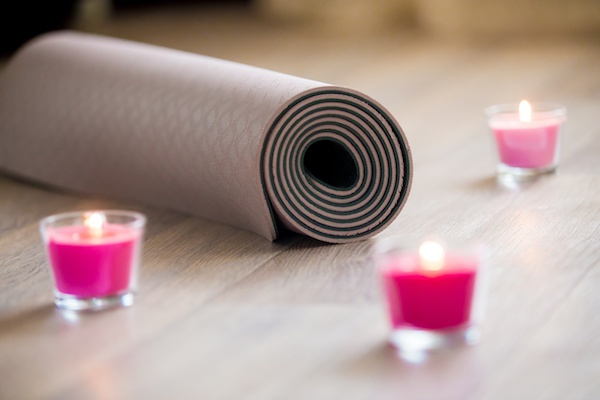
#3 Add essential oils in your yoga and studio hygiene practice.
Essential oils are effective natural cleaning agents. They’ve actually been tested in hospitals as a way to battle hospital-acquired infections and to prevent the spread of diseases.[11] You can achieve a similar effect by using essential oils to clean your yoga gear and your yoga space.
Diffusing essential oils in your practice space—especially if it’s a studio with a lot of people coming in and out—can help protect you and your yogis from infections … especially during the colder, harsher seasons.
Both eucalyptus Eucalyptus globulus (Labill.) and tea tree New Zealand Leptospermum scoparium (Forst.) essential oils are great options.
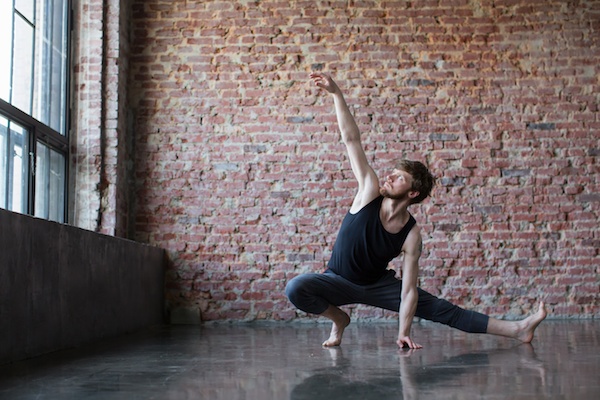
Experiment with combining different essential oils to increase effectiveness (different essential oils will be effective against different bacteria) and to create a more unique and pleasant odor. We recommend a blend of eucalyptus E. globulus, lavender Lavandula angustifolia (Mill.), and lemon C. limonum essential oils in a 3:1:1 ratio. So, three drops eucalyptus, one drop lavender, and one drop lemon. You can increase the volume, but keep the ratio the same (e.g., nine drops eucalyptus, three drops lavender, and three drops lemon).
Since essential oils also have antifungal properties[12], you can use them to create non-toxic cleaners for yoga mats. Try making a spray with tea tree New Zealand L. scoparium, bergamot C. aurantium var. bergamia, and lavender L. angustifolia in the same 3:1:1 ratio. So, three drops tea tree, one drop bergamot, and one drop lavender essential oils dissolved into one tablespoon of vodka and added into two ounces of water.
In other words, essential oils can further boost your yoga practice by helping to support an already healthy immune system naturally.
#4 BONUS: Aromatherapy Yoga Blend
Here’s an aromatherapy essential oil blend you can start with. It’s a well-balanced blend for mid-day, whether you’re taking a yoga lunch break, teaching an afternoon class, or just need a little pick-me-up.
Combine lavender L. angustifolia, lemon C. limonum, and peppermint M. × piperita using a 1:1:1 ratio to achieve the desired effect.
You might also try experimenting with different essential oils to create your own “signature” yogi blend. Here’s a fantastic blog post on how to get started with blending.
What other ways have you “blended” holistic health modalities? Share your thoughts in the comments!
References
[1] Ayurveda is a traditional Indian healing system. It has been traced back to around 5,000 BCE.
[2] Asana is the physical practice of yoga, the poses.
[3] Gamma amino-butyric acid is an important neurotransmitter that inhibits nerve transmission in the brain calming the nervous activity.
[4] For an explanation of the chakra system, you might enjoy Wheels of Light by Rosalyn Bruyere. There is also an interesting explanation incorporated into The Healing Power of Flowers by Rhonda PallasDowney.
[5] Mahajan, A. (2014). Role of yoga in hormonal homeostasis. Int J Clin Exp Physiol, 1(3), 173. Retrieved from http://dx.doi.org/10.4103/2348-8093.143474
[6] Vinyasa means: “Vinyasa means a gradual progression or a step-by-step approach that systematically and appropriately takes a student from one point and safely lands them at the next point. It is sometimes described as the “breathing system,” or the union of breath and movement that make up the steps.” From: Ezraty, M. (2007, August 28). Defining ‘Vinyasa.’ Yoga Journal. Retrieved from http://www.yogajournal.com/article/teach/defining-vinyasa/
[7] Woolery, A., Myers, H., Sternlieb, B., & Zeltzer, L. (2004). Yoga Intervention for Young Adults with Elevated Symptoms of Depression. Altern. Ther. Health Med., 10(2), 60-63. Retrieved from https://www.ncbi.nlm.nih.gov/pubmed/15055096
[8] Watanabe, E., Kuchta, K., Kimura, M., Rauwald, H., Kamei, T., & Imanishi, J. (2015). Effects of Bergamot Essential Oil Aromatherapy on Mood States, Parasympathetic Nervous System Activity, and Salivary Cortisol Levels in 41 Healthy Females. Forsch Komplementmed, 22(1), 43-49. Retrieved from http://dx.doi.org/10.1159/000380989
[9] Halpern, J., Cohen, M., Kennedy, G., Reece, J., Cahan, K., & Baharav, A. (2014). Yoga for Improving Sleep Quality and Quality of Life for Older Adults. Alternative Therapies, 20(3), 37-46. Retrieved from https://www.ncbi.nlm.nih.gov/pubmed/24755569
[10] Chien, L., Cheng, S., & Liu, C. (2012). The Effect of Lavender Aromatherapy on Autonomic Nervous System in Midlife Women with Insomnia. Evidence-Based Complementary and Alternative Medicine, 2012, 1-8. Retrievd from http://dx.doi.org/10.1155/2012/740813; Hirokawa, K., Nishimoto, T., &Taniguchi, T. (2012). Effects of Lavender Aroma on Sleep Quality in Healthy Japanese Students.
Perceptual and Motor Skills, 114(1), 111-122. Retrieved from http://dx.doi.org/10.2466/13.15.pms.114.1.111-122; Ju, M., Lee, S., Bae, I., Hur, M., Seong, K., & Lee, M. (2013). Effects of Aroma Massage on Home Blood Pressure, Ambulatory Blood Pressure, and Sleep Quality in Middle-Aged Women with Hypertension. Evidence-Based Complementary and Alternative Medicine, 2013, 1-7. Retrieved from http://dx.doi.org/10.1155/2013/403251
[11] Sanderson, H. & Ruddle, J. (1992). Aromatherapy and Occupational Therapy. The British Journal of Occupational Therapy, 55(8), 310-314. Retrieved from http://dx.doi.org/10.1177/030802269205500807
[12] D'Auria, F., Tecca, M., Strippoli, V., Salvatore, G., Battinelli, L., & Mazzanti, G. (2005). Antifungal activity of Lavandula angustifolia essential oil against Candida albicans yeast and mycelial form. Med Mycol, 43(5), 391-396. Retrieved from http://dx.doi.org/10.1080/13693780400004810; Viuda-Martos, M., Ruiz-Navajas, Y., Fernández-López, J., & Pérez-Álvarez, J. (2008). Antifungal activity of lemon (Citrus lemon L.), mandarin (Citrus reticulata L.), grapefruit (Citrus paradisi L.) and orange (Citrus sinensis L.) essential oils. Food Control, 19(12), 1130-1138. Retrieved from http://dx.doi.org/10.1016/j.foodcont.2007.12.003; Hammer, K., Carson, C., & Riley, T. (2003). Antifungal activity of the components of Melaleuca alternifolia (tea tree) oil. J Appl Microbiol, 95(4), 853-860. Retrieved from http://dx.doi.org/10.1046/j.1365-2672.2003.02059.x
Disclosure of Material Connection: We employees of American College of Healthcare Sciences, the Institution that publishes this blog. However, all opinions are our own. This blog may contain affiliate links. We are disclosing this in accordance with the Federal Trade Commission’s 16 CFR, Part 255: “Guides Concerning the Use of Endorsements and Testimonials in Advertising.”
This article is for informational purposes only. It is not intended to treat, diagnose, cure, or prevent disease. This article has not been reviewed by the FDA. Always consult with your primary care physician or naturopathic doctor before making any significant changes to your health and wellness routine.

